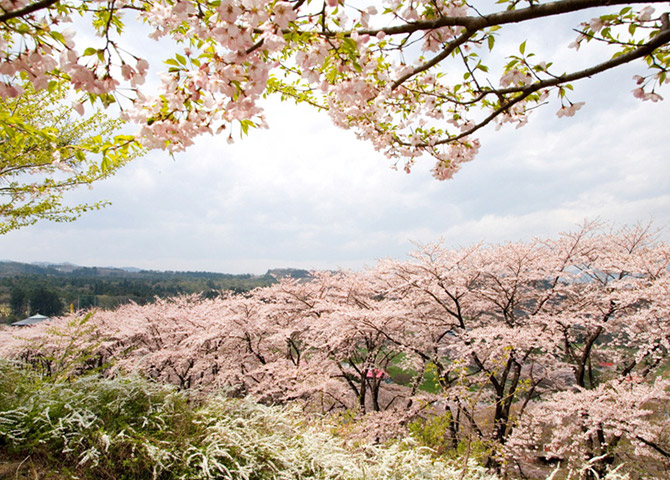Ikaho Onsen, Tucked Away Tranquility
Explore the Outskirts of the Kanto plain
Ikaho Onsen is a historic hot spring resort located in Shibukawa, Gunma Prefecture, known for its therapeutic waters and scenic beauty. The origin of Ikaho Onsen is believed to date back to either the era of the 11th Emperor Suinin or the discovery by the Buddhist monk Gyoki, similar to Kusatsu Onsen. The first written record of Ikaho Onsen appears in texts from the Nanbokucho period (1336-1392), indicating its ancient origins.
Ikaho Onsen's blend of history, culture, and natural beauty makes it a compelling destination. Its therapeutic hot springs, iconic stone steps, and cultural landmarks offer a unique experience that draws visitors year-round. Whether seeking relaxation, historical insights, or scenic beauty, Ikaho Onsen has something for everyone.

The Origins of Ikaho
The name "Ikaho" is said to derive from the Ainu language "Ikahoppu" (boiling water) or from the combination of the local terms for thunder (ika) and fire (ho). These legends add a mystical charm to the hot spring experience.
Historical Timeline
The hot springs of Iizaka Onsen are believed to have originated around the era of the 11th Emperor Suinin. Between 700-780 AD, they were mentioned in the Manyoshu, Japan's oldest poetry anthology. In 1576, Takeda Katsuyori ordered the creation of a therapeutic retreat for his soldiers, and by 1590, the hot spring town was moved to its current location. A checkpoint was established along the Mikuni Kaido road in 1631. In 1743, the hot spring inns were organized into a system representing the 12 zodiac signs. However, the town suffered devastating fires in 1784, 1793, 1878, and 1920, which destroyed large parts of it.
Hot Springs
Golden and Silver Springs
Ikaho is famous for its two types of hot springs:
- Golden Spring (Kogane no Yu): This hot spring, originally the only one in Ikaho, gets its characteristic brown color from oxidized iron. It is known for its mild, warming properties that improve circulation and are especially beneficial for women, often referred to as "fertility baths."
- Silver Spring (Shirogane no Yu): Discovered more recently, this hot spring is clear and abundant, known for aiding recovery from illness and fatigue.
Day use hot springs
Here are some hot springs in Ikaho that are available for daytime use:
Daytime Use Hot Springs in Ikaho
These hot springs provide a relaxing day-use experience, allowing visitors to enjoy the therapeutic benefits of Ikaho’s renowned waters even if they are not staying overnight.
-
Ikaho Rotenburo (Open-air Bath)
- Natural open-air bath surrounded by nature, using the Golden Spring water.
-
Ikaho Stone Steps Bath
- Public bathhouse located along the famous stone steps street.
-
Ikaho Golden Bath (Kin no Yu)
- Offers both indoor and outdoor baths with Golden Spring water, a sunroof bathhouse.
-
Ikaho Shirogane no Yu (Silver Bath)
- Newly discovered clear hot spring known for health benefits.
-
Koganenoyu
- Day-use facilities offering the Golden Spring water with different amenities.
-
Ikaho Onsen Ryokan Facilities (Various)
- Many ryokan (Japanese inns) in Ikaho offer daytime use of their baths. It's recommended to contact them directly for availability and specific hours.

Sightseeing spots
Ikaho's Iconic Stone Steps
The stone steps of Ikaho, now 365 in number, symbolize the town's rich history and serve as its central attraction. The steps, which stretch endlessly towards the sky, were built during the early development of the hot spring resort. They were recently extended to enhance the town’s appeal, reflecting a wish for the prosperity of Ikaho as a year-round destination.
Places of Interest
-
Stone Steps Street: Lined with souvenir shops, manju (sweet bun) stores, and shooting galleries, this street captures the essence of Ikaho's hot spring town charm. Visitors can enjoy a leisurely stroll, find their zodiac sign markers, and relax in the foot baths.
-
Ikaho Onsen Stone Steps Bath: For those needing more than a foot bath, this public bathhouse offers a relaxing soak.
-
Ikaho Shrine: Situated at the top of the stone steps, this shrine is dedicated to the gods of medicine and hot springs, offering blessings for health, fertility, and prosperity.
-
Kajika Bridge: Famous for its stunning autumn foliage, this bridge near the hot spring source is a popular spot for photographs and romantic strolls.
-
Ikaho Ropeway: Provides panoramic views of the surrounding mountains and the hot spring town.
-
Ikaho Rotenburo (Open-air Bath): Set in a natural environment, this bath uses the Golden Spring water and offers a unique drinking spot where visitors can taste the spring water.
-
Ikaho Museum of Literature: Dedicated to the writer Tokutomi Roka, who penned his famous novel "Hototogisu" here.
-
Natural Surroundings: Ikaho's lush environment offers hiking trails, scenic viewpoints, and seasonal changes in flora, providing a tranquil retreat.
Access Information
To get to Ikaho Onsen from Tokyo, you have several options:
By Train and Bus
-
Shinkansen and Bus: Tokyo Station → Shibukawa Station (Joetsu Shinkansen, ~1.5 hours) → Bus to Ikaho Onsen (~25 minutes).
- Take the Joetsu Shinkansen from Tokyo Station to Shibukawa Station. This journey takes approximately 1 hour and 30 minutes.
- From Shibukawa Station, take a bus bound for Ikaho Onsen. The bus ride takes about 25 minutes.
-
Local Train and Bus: Ueno Station → Shibukawa Station (JR Joetsu Line, ~2.5 hours) → Bus to Ikaho Onsen (~25 minutes).
- Take the JR Joetsu Line from Ueno Station to Shibukawa Station. This journey takes about 2 hours and 30 minutes.
- From Shibukawa Station, take a bus to Ikaho Onsen as mentioned above.
By Express Bus
- Take an express bus from Tokyo Station or Shinjuku Station directly to Ikaho Onsen. The bus ride takes approximately 2 hours and 30 minutes.
By Car
- Drive from Tokyo to Ikaho Onsen via the Kan-Etsu Expressway. The drive takes about 2 hours and 30 minutes, depending on traffic conditions.
find your next getaway
Kumamoto
2 adults